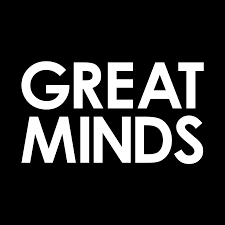How Innovative Companies Get their Best Ideas from Academic Research
 Since World War II, the United States has been an innovation superpower. In virtually every advanced field, whether it be information technology, biotechnology, agriculture or renewable energy, America holds a leading position. Other nations may challenge in one field or another, but no one can match its depth and breadth.
Since World War II, the United States has been an innovation superpower. In virtually every advanced field, whether it be information technology, biotechnology, agriculture or renewable energy, America holds a leading position. Other nations may challenge in one field or another, but no one can match its depth and breadth.
To account for its success, many point to America’s entrepreneurial culture, its tolerance for failure and its unique ecosystem of venture funding. Those factors do play important roles, but the most important thing driving America’s success has been its unparalleled scientific leadership.
Most of this research is publicly funded. Take a look at any significant innovation, such as an iPhone, and you’ll find that most, if not all, of the technology came from some government program. Google itself got its start from a federal grant. Yet that poses a problem for managers.
How can a private company turn public research into a competitive advantage?
The Role of Science in Innovation
To understand America’s current technological dominance, you have to go back to World War II.  In 1941, as tensions began mounting, Vannevar Bush persuaded President Roosevelt to set up the Office of Scientific Research and Development (OSRD) to focus the country’s scientific talent on the war effort.
The program, which led to the development of radar, atomic energy, battlefield medicine and countless other innovations, was an enormous success. So much so that as the war was ending, Roosevelt asked Bush to make recommendations for how the United States could best build on its wartime scientific efforts during peacetime.
Bush’s report, titled Science, The Endless Frontier, was delivered to President Truman in 1945 and laid out the basic architecture of American scientific investment in the post-war world. Bush explained the reasoning behind government funding of basic research in very clear terms:
Basic research leads to new knowledge. It provides scientific capital. It creates the fund from which the practical applications of knowledge must be drawn. New products and new processes do not appear full-grown. They are founded on new principles and new conceptions, which in turn are painstakingly developed by research in the purest realms of science.
He also argued that “there must be a stream of new scientific knowledge to turn the wheels of private and public enterprise.†The report led directly to the creation of the National Science Foundation and indirectly to other scientific efforts such as Defense Advanced Research Projects Agency (DARPA) and the National Institutes of Health (NIH) as well as programs at other agencies, such as the Department of Energy (DOE).
It has been this architecture that has driven America’s technological leadership, funding everything from the first computers, the Internet, GPS, laser scanners at stores and most blockbuster drugs. Return on this investment is high, estimated to be anywhere from 20% to 40%. So for companies looking to create revolutionary products, identifying and accessing cutting edge, exploratory research is a key competitive advantage.
Exploring the Idea Space
One way that firms identify and access crucial research in the public domain is to simply monitor what’s going on in the academic world. Federally funded research is published openly, so monitoring scientific journals, sending internal researchers to conferences and working closely the offices of technology transfer at government agencies and research centers is invaluable.
In the pharmaceutical industry, the monitoring process can be incredibly elaborate. Perry Nisen, CEO at Sanford Burnham Prebys Medical Discovery Institute, points out that his former employer, GlaxoSmithKline, has thousands of people working in R&D and assign experts to specific areas of interest, which some spend their entire careers focusing on.
Most companies don’t have those kinds of resources though and take a more ad hoc approach. Eric Haller, EVP and Global Head at Experian Data Labs emphasizes creating a culture of discovery. “We pay for our data scientists to go to the conferences of their choice, encourage them to publish white papers and we have weekly seminars so that they can share what they’ve learned,†he says, but doesn’t assign formal areas of focus.
The key, emphasizes Jeff Welser, a VP and Lab Director at IBM’s Almaden Research Center is to be seen as an active participant and not just a spectator. “Being immersed is incredibly critical,†he stresses. “You need to have people active at conferences, writing papers and helping the field advance. You have to put value in to get value out.â€
Creating Partnerships with Academia
One way that some firms get the inside track is to partner directly with academia so that they don’t have to wait for results to be published publically. Daniel Hook, MD of Digital Science, explains that these are structured differently than government grants and that while corporate partnerships are often more flexible, researchers are also asked to do more.
“Generally more is asked of researchers in a private partnership, such as consulting with internal researchers†he says. “There are also often milestones put in place that determine whether funding continues.â€Additionally, companies sponsoring research usually insist on first right of refusal for any commercialization of the research and require approval prior to publication.
Giulio F. Draetta, the Director for MD Anderson’s Institute for Applied Cancer Science believes that making sure incentives are aligned is crucial to making academic partnerships work. He advises first to “put in place a system that recognizes contribution based on having achieved an agreed-upon task,†such as identifying a particular molecule or receptor in cancer studies.
Yet partnering with academia can also be done at a much smaller scale. Digital Science’s Hook points to Elsevier, which offers small prizes, usually just a few thousand dollars, for scientific achievement. IBM’s Welser advises smaller firms to “look to cultivate relationships with a couple of professors. I would also think seriously about geography and build up relationships with universities in your area that you can drop in on and interact with.â€
Avoiding the Culture Wars
One pitfall for firms looking to mine research in the academic world is the basic cultural divide between academic scientists that are doing basic exploratory work and those that are focusing on research of a more applied nature. Often, scientists themselves are don’t agree on which approach is more fruitful.
For example, Sanford Burnham’s Nisen told me, “I try to find people, physician scientists especially, who understand unmet clinical needs and can verbalize the pharmacological effect that we can work back from. From there, we can go searching through the science to find useful solutions to the problem.â€
Yet MD Anderson’s Draetta takes the opposite view. He says, “I still think that the greatest discovery comes from exploratory research in which there is not a specific target. Starting with a specific disease in mind is more high percentage, but the real breakthroughs come from basic discoveries,†and points to the recent advances in immunotherapy as a prime example.
Lynda Chin, of the University of Texas explains, “Basic science is a long-term proposition. You need to be single-minded and stick with it until your hypothesis is disproved. Applied science, however, requires execution by a cross-disciplinary team and you need to constantly make decisions about time and resources, taking into account not only probability of success, but also opportunity cost.â€
The bottom line, she adds, is that “this means you have to work hard to integrate two different cultures and it is a challenge to do that effectively. We need to build a culture of understanding between the two disciplines.â€
Innovating the Innovation Process
Throughout history, integrating science and industry has proved to be an unwieldy process. Michael Faraday discovered the principles of the dynamo and the electric motor by the 1830’s. Yet the first electrical plant, Edison’s Pearl Street Station, wasn’t built until 50 years later, in 1882. Still, economist Paul David points out that the real impact didn’t come until the 1920’s.
And lest you think that that long delays from breakthrough to product are a thing of the past, Consider the case of the Macintosh. Apple launched its revolutionary computer to great fanfare in 1984, but all of the basic functionality was on display as early as 1968, at Douglas Engelbart’s Mother of All Demos. Xerox had a working version as early as 1973.
True, we do have far more capabilities to search the idea space today. Resources like Google, PubMed and ArXiv make it much easier to locate published scientific work. Other tools, such as Figshare, UberResearch and Symplectic provide further resources to identify promising ideas. Yet still, we have a long way to go to bridge the divide between industry and science.
One encouraging trend is the emergence of efforts that combine the efforts of academia and industry, such as Draetta’s Institute for Applied Cancer Science, JCESR at Argonne National Laboratory, which is developing advanced batteries and the Semiconductor Research Corporation that’s advancing computer science beyond Moore’s Law.
IBM’s Welser explains, “The thing that’s nice about that kind of setup is that you get to pool your resources with government, academia and other industry players, which is a good thing at the pre-competitive stage.†Of course, once the collective breakthroughs become exciting new products, IBM and other members, like Intel and Microsoft,fight like dogs.
And that, probably more than anything else, encapsulates how firms need to pursue exploratory research. Commerce is a necessarily competitive endeavor. Discovery, on the other hand, is a collective one. The two, however, aren’t necessarily mutually exclusive. In fact, if you want to compete at the highest level, you have to treat collaboration as a competitive advantage.
Wait! Before you go…
Choose how you want the latest innovation content delivered to you:
- Daily — RSS Feed — Email — Twitter — Facebook — Linkedin Today
- Weekly — Email Newsletter — Free Magazine — Linkedin Group
 Greg Satell is a popular speaker and consultant. His first book, Mapping Innovation: A Playbook for Navigating a Disruptive Age, is coming out in 2017. Follow his blog at Digital Tonto or on Twitter @Digital Tonto.
Greg Satell is a popular speaker and consultant. His first book, Mapping Innovation: A Playbook for Navigating a Disruptive Age, is coming out in 2017. Follow his blog at Digital Tonto or on Twitter @Digital Tonto.
NEVER MISS ANOTHER NEWSLETTER!
LATEST BLOGS
How Brexit Has Affected UK E-commerce Businesses
Photo by Zyro on Unsplash The popularity of online shopping was already growing at an impressive rate – and…
Read MoreOvercoming range anxiety: three tips for EV owners
Photo by Jenny Ueberberg on Unsplash In the last few years, electric vehicles (EVs) have become more and more…
Read More


